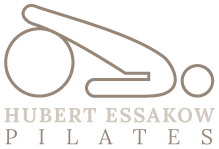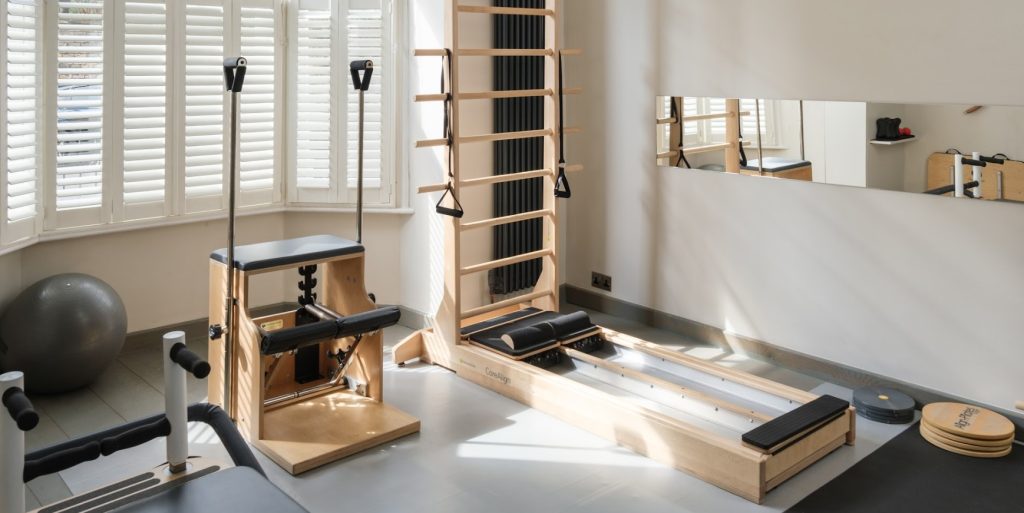What makes Reformer Pilates worth your time?
You’ve seen the machines — sleek frames, moving platforms, straps, and springs. They look more like something from a gym lab than a Pilates class. Most people see one and think, “Is that really doing anything?”
Here’s the truth: Reformer Pilates isn’t about trends or gadgets. It’s about getting your body to move the way it’s meant to — stronger, smoother, and with proper control.
At my studio in Camberwell, I keep it simple. No shouting, no boot-camp pace. Just movement that makes sense for your body. I help you build real strength and fix what everyday life has thrown out of line.
This guide walks you through what Reformer Pilates is, the benefits that make it stand out, and the key techniques that turn it from a workout into body maintenance that lasts.
What is Reformer Pilates?
The Reformer looks technical, but it’s basically a moving platform attached to springs and straps. You lie, sit, or stand on it while pushing and pulling against resistance. The springs aren’t there to make life easier; they make you focus. Every inch of a movement counts.
Unlike mat Pilates, which relies mostly on bodyweight, the Reformer adds controlled resistance. You learn to stabilise while you move — the perfect mix of strength and stretch.
At Hubert Essakow Pilates, it’s not about copying shapes or chasing the burn. It’s about awareness — how you hold yourself, how you breathe, and how your body connects through every rep.
You finish a session taller, lighter, and with a sense that your body’s finally doing what it’s built to do.
The Real Benefits of Reformer Pilates
Most people step into their first session expecting a gentle stretch. A few sessions later, they realise it’s one of the most complete full-body workouts you can find.
Let’s break down what makes it so effective.
1. Real Core Strength
Forget endless crunches. Reformer Pilates builds strength from the inside out. The machine works your deep stabilising muscles — the ones that keep your spine supported and your posture upright. You’re not just training abs; you’re training control.
Each press or pull demands focus. Your core stays active throughout, building strength that you actually feel in daily life — walking, lifting, even just sitting upright.
2. Better Posture, Naturally
Hours at a desk or on your phone round your shoulders and tighten your hips. The Reformer reverses that. By training the back, shoulders, and core to work together, your body resets to its natural alignment.
Clients often say, “I feel taller.” They’re not imagining it. Good posture isn’t about standing stiff — it’s about balance. When your muscles share the load properly, you stand straight without even trying.
3. Flexibility That Lasts
Most stretching fades after a few hours. Reformer Pilates helps you build strength through the stretch. The springs create controlled resistance, so muscles lengthen under tension rather than being forced. That’s why you gain mobility without soreness — and why it’s perfect if your joints feel tight or your body’s stuck in old movement habits.
4. Injury Recovery and Prevention
Ask any physio why they recommend Reformer Pilates — it’s because it rebuilds strength safely. The springs support your movement while keeping resistance steady. You’re never overloading joints or working past your limits.
Many clients at my studio come in after rehab. I help them keep progressing, regaining confidence in their movement while staying pain-free.
5. Focus and Mind-Body Awareness
Each move needs you to be present. You notice how you’re breathing, how your body’s lining up, and how it all feels when you move through it. It’s not about getting it perfect — it’s about paying attention and letting your body learn what feels right.
It’s not about zoning out — it’s about tuning in. The mental focus carries over into daily life. You move with more intention and less tension, and that’s a win well beyond the studio.
Reformer Pilates adjusts to you. It doesn’t matter if you’re a beginner, a runner, or someone who just wants to feel stronger. You’ll see results that actually last — not a quick fix, but progress that sticks.
Core Techniques & How They Work
The Reformer looks smooth when someone else does it. Once you’re on it, you realise every move requires total control. Here are a few of the core techniques you’ll come across — and what they do for you.
Footwork
You lie on your back and push against the foot bar. It builds power through your legs and hips while teaching your body how to move evenly. Each rep connects your feet, knees, and pelvis — a reset for alignment that most of us don’t realise we’ve lost.
The Long Stretch Series
You hold a plank on the moving carriage. Your shoulders, arms, and abs work together as you slide in and out with control. It’s simple, brutal, and brilliant. The slower you move, the more strength you build.
Short Spine Massage
Despite the name, it’s not a massage. It’s a controlled roll through your spine — stretching and strengthening at the same time. It opens tight hamstrings and relieves pressure from sitting.
Coordination
You move arms and legs in sync while keeping your torso still. Sounds easy until you try it. This one connects mind and body fast. It’s what turns movement into skill.
The Golden Rule: Control Over Speed
I always say, “Slow is strong.” Moving fast skips the hard part; moving slow builds it. That’s why every exercise is done with intention — feeling each inch of the movement, not rushing for the next rep.
Who It’s For
Reformer Pilates isn’t just for the super-fit or the super-flexible. It’s for anyone who wants their body to actually work properly.
If you:
- Sit at a desk all week and feel your back stiffen up
- Struggle with posture or balance
- Want to train without pounding your joints
- Need to rebuild strength after an injury
then this fits you perfectly.
Beginners like it because it’s guided and controlled. Older clients love it because it’s gentle yet challenging. Athletes use it to stay balanced and avoid injuries.
At my studio in Camberwell, the focus is on moving well — not ticking boxes or chasing sweat. You start where you are, and the work meets you there.
Why Train with Hubert Essakow Pilates
There’s Pilates, and then there’s Pilates taught with real experience behind it. I bring years of movement training, choreography, and hands-on instruction to every session.
Each lesson is tailored to how your body feels that day. Small groups or private sessions mean you’re always seen and guided. No cookie-cutter routines.
Most studios push pace; here, I teach precision. That’s how you build strength that supports your posture, your joints, and your life outside the studio.
Clients from across London come here for results they can feel: fewer aches, better balance, and more confidence in how they move.
If you want Reformer Pilates in London that’s personal, smart, and genuinely effective — this is it.
Ready to Start?
Curious what Reformer Pilates could do for you? Come and try a private session at Hubert Essakow Pilates in Camberwell.
I start from where you are — brand new, coming back after an injury, or just wanting to move better. Every session is built around you — simple, steady progress that helps you get stronger and move with control that actually lasts.
You’ll feel it quickly. The stiffness eases, your energy lifts, and your body begins to work the way it should again.
FAQs
1. Is Reformer Pilates good for beginners?
Yes. You don’t need any background in Pilates to start. The Reformer adjusts to how strong or flexible you are, so you can build strength safely at your own pace. Most people start noticing small wins — steadier balance, smoother movement — after just a few sessions.
2. How often should I do Reformer Pilates?
Doing it two or three times a week gives the best results, but even one session a week keeps your body moving well. What really matters is consistency. Over time your body just gets used to moving better — it becomes second nature.
3. What’s the difference between Reformer and Mat Pilates?
Mat Pilates takes place on the floor and relies mainly on your own body weight. The Reformer brings in springs and straps that you can adjust to make things lighter or harder. That bit of control changes how the whole exercise feels — it’s smoother, easier on your joints, and you can feel your body working together instead of in separate parts.
4. Can Reformer Pilates help with back pain?
Yes. It’s gentle on the joints but powerful for the muscles around your spine. During each session, you learn how to move without tensing up, which eases stiffness and keeps you supported. Many people who finish physio carry on here to keep that progress going and stay pain-free long term.
5. Do I need to be flexible to start?
Not at all. Most people come in feeling tight. Over time, the movements open up your range naturally. As your control improves, your flexibility follows — it just happens without you having to force it.
Final Word
Reformer Pilates isn’t about chasing perfect form or impossible goals. It’s about learning to move well — and keeping that strength for life. Each session builds you up a bit more, helping your body feel steady, open, and pain-free so you can get on with living.
If you’re curious to see how it feels, come in for a Reformer session at my studio in Camberwell. You’ll leave moving better — and that change builds every time you come back.

